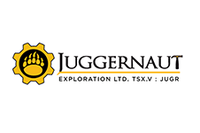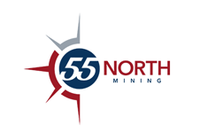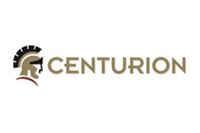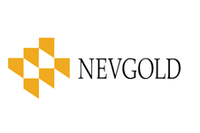Introduction to Remote Sensing in Mineral Exploration
Remote sensing in mineral exploration can help miners find and evaluate deposits without having to undertake massive exploration operations.
Exploring for minerals is a challenge that miners need to approach with as much information as possible. Rare metals and minerals can easily be missed, and the process of searching for them is an expensive risk.
That is why remote sensing and remote sensing data in mineral exploration is so important. Remote sensing involves gathering information about the physical world by measuring the electromagnetic radiation, particle and field signals that emanate from objects.
Remote sensing data occurs when information about an object is gathered without making physical contact with said object, especially the Earth, which is in contrast to the common on-site observation.
Remote sensing isn’t a specific technology, but rather an umbrella term for a number of techniques and tools. These include radar, geographical information systems, sonar and imaging through spectral bands to name a few.
These sensing systems or tools are then used to gather valuable visual and spectral data. That data can then be analyzed to create insights throughout the mineral exploration process.
Remote sensing images are used for mineral exploration in two key ways:
- The mapping and analysis of the geology, faults and fractures of an ore deposit.
- Recognizing hydrothermally altered rocks by their spectral signature.
Images are gathered either through optical sensors, or through synthetic aperture sensors. Optical sensors measure the spectral data of sunlight reflected from the Earth’s surface. Synthetic aperture sensors are able to detect electromagnetic data by transmitting microwave radiation and receiving the back-scatter waves from the Earth’s surface.
What are the benefits of remote sensing in mineral exploration?
Remote sensing is a valuable tool in mineral exploration, thanks to its ability to save time and money while providing helpful information. It is best used for the discovery of high-value commodities such as diamonds and gold, which are becoming more difficult to locate. While it may not show exactly where major deposits are, data gathered through sensors can be used to narrow field surveys to smaller areas.
Applications of remote sensing can also provide value by reducing the risk of a project and helping prioritize which sites to explore first. Expensive operations like drilling and field work can come after information is gathered.
The greatest advancement in mineral exploration is the ability to synthesize various forms of data. Known drill results can be integrated with topographic maps, air photos, structural maps and ore grade data. Data synthesis can greatly increase the accuracy and effectiveness of an exploration program.
What is the history of remote sensing?
Remote sensing has been around since before World War II, but has rapidly advanced in recent years. Initially, the primary use of remotely gathered data was comparative. If gold was found in a particular area, aerial photos of that area would be compared with aerial photos of other locales in order to find places with similar surface features. The hope was that they too would cover a valuable gold deposit.
Once satellite imagery became commercially available, the same compare-and-contrast observation method was used with satellite images. To date, aerial photography is still used as an exploration tool. Aerial photographs are used to detect topographic surface features that may imply the subsurface geology. Surface features like differential erosion, outcropping rock, drainage patterns and folds can be identified. Faults and contacts often provide a conduit or depositional environment for hydrothermal or magmatic fluids in regions of known mineralization. This makes them excellent targets for deeper exploration.
The advent of multispectral imaging and thematic mapping has allowed surface mapping to be performed remotely. This enables vast areas to be mapped in a short time, at a fraction of the cost of traditional geologic mapping. Different scanning spectrums have enabled researchers to begin cataloguing various reflection and adsorption properties of soils, rock and vegetation.
These spectra can be utilized for processing and interpreting actual surface lithologies from remote images. Among the most valuable data collected are the weathering and alteration products of mineral deposits, especially clays. Clays and oxides can be readily differentiated by the spectra utilized for remote sensing. By correlating the alteration products to parent materials, potentially valuable ores may be distinguished without the need for extensive soil sampling programs.
What are the applications of remote sensing?
Collecting data in the field is just the first step in coming up with a product that is useful in exploration. The next step is to translate the data into a form that is presentable to explorers, and one way to do that is through image classification. Remote sensing makes use of spectral signatures. For any given material, the amount of solar radiation that it reflects, absorbs, transmits and emits varies with wavelength. When the amount of radiation or electromagnetic energy from an object is plotted over a range of wavelengths, the connected points produce a curve called the material’s spectral signature.
All objects have a unique spectral signature, and similar objects share a spectral signature. Once a company has identified the spectral signature of an object, the same signature can be searched for in other data sets to find patterns and similar objects. To determine an object’s spectral signature, sensor data needs to be manipulated and processed. Most of this manipulation is accomplished by altering spectral color bands in the image.
What are the popular methods and technologies used in remote sensing?
While remote sensing in mineral exploration is a rapidly advancing field, currently most remote sensing methods are performed through the following technologies and data sources:
- Landsat (which collects landsat data)
- Advanced Spaceborne Thermal Emission and Reflection Radiometer (ASTER)
- Light detection and ranging (Lidar)
- Hyperspectral
- Field spectroscopy
- Thermal infrared
Landsat
The landsat technology was first used In 1972 by the United States when the country used a group of unmanned satellites, collectively known as Landsat satellites, which carry sensors that record light and portions of the electromagnetic spectrum, as it reflects off the Earth.
ASTER
ASTER is a Japanese sensor which can be found on board the Terra satellite. ASTER was first launched into Earth orbit in 1999 and is one of NASA’s earth observation satellites. The instrument has been collecting data since February 2000.
LiDAR
LiDAR, which stands for light detection and ranging, is a surveying method that has the ability to measure the distance to a target through electromagnetic radiation, which occurs by illuminating the target with laser light and measuring that reflected light with a sensor. LiDAR systems are then set up through variations in the timing of the laser return, paired with the wavelengths, are then used to make digital 3-D representations of specific targets.
Hyperspectral
Hyperspectral imaging is a method of processing information from across the electromagnetic spectrum. Data acquisition of hyperspectral sensors is done through obtaining the spectrum for each pixel in the image of a scene, with the goal of finding objects, identifying materials, or detecting processes.
Field spectroscopy
Spectroscopy is the study of the interaction between electromagnetic radiation and matter. Field spectroscopy occurs when spectroscopy is undertaken in the natural environment, particularly where the reflectance properties of Earth surface — vegetation cover, soils, rocks and bodies of water — are measured under solar illumination. Spectroscopy is the study of the interaction between electromagnetic radiation and matter.
Thermal infrared
Thermal infrared radiations are emitted from warm objects such as the Earth’s surface. They are used in satellite remote sensing for measurements of the earth’s land and sea surface temperature. Thermal infrared remote sensing is also often used for detection of forest fires.
Remote sensing applications are a mainstay in mineral exploration and for good reason. Advances in data processing and sensor technology will continue to allow explorers to take more calculated risks and gauge their mining progress with a sense of accuracy.
This is an updated version of an article originally published by the Investing News Network in 2011.
Don’t forget to follow us @INN_Resource for real-time updates!
Securities Disclosure: I, Nicole Rashotte, currently hold no direct investment interest in anything mentioned in this article.
- Satellite Imagery and Gold Exploration ›
- From Data to Discovery: How AI is Changing the Face of Modern Mining ›
- Hyperspectral Imaging: A Useful Tool to Locate Gold, Oil and Terrorists ›
- XRF Analyzers: Cost-cutting Precious Metals Exploration Technology ›
- Induced Polarization Surveys: A Copper Exploration Technique ›






